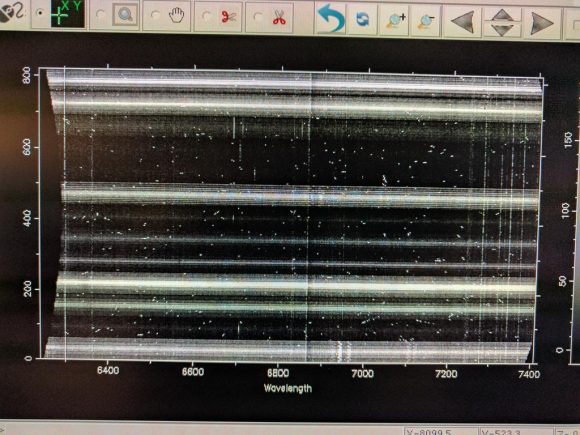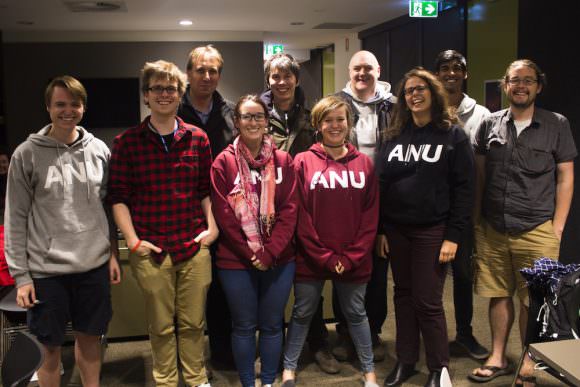A concentrated three-day search for a mysterious, unseen planet in the far reaches of our own solar system has yielded four possible candidates. The search for the so-called Planet 9 was part of a real-time search with a Zooniverse citizen science project, in coordination with the BBC's Stargazing Live broadcast from the Australian National University's Siding Spring Observatory.

A view of data from SAMI, a new multi-object integral field spectrograph at Siding Spring Observatory, which was used to look for the hypothetical Planet 9. Credit: Dilyar Barat via Twitter.
Researcher Brad Tucker from ANU, who led the effort, said about 60,000 people from around the world classified over four million objects during the three days, using data from the SkyMapper telescope at Siding Spring. He and his team said that even if none of the four candidates turn out to be the hypothetical Planet 9, the effort was scientifically valuable, helping to verify their search methods as exceptionally viable.
"We've detected minor planets Chiron and Comacina, which demonstrates the approach we're taking could find Planet 9 if it's there," Tucker said. "We've managed to rule out a planet about the size of Neptune being in about 90 per cent of the southern sky out to a depth of about 350 times the distance the Earth is from the Sun.

Researchers from Australian National University pose with BBC astronomers Chris Lintott, Brian Cox and Dara O'Brien. Credit: ANU.
Last year, Caltech astronomers Mike Brown and Konstantin Batygin found indirect evidence for the existence of a large planet. They found that the orbits of several different Kuiper Belt Objects were likely being influenced by a massive planet out beyond the orbit of Pluto, about 200 times further than the distance from the Sun to the Earth. This planet would be Neptune-sized, roughly 10 times more massive than Earth. But the search is difficult because the object is likely 1000 times fainter than Pluto.
The search has been on, with many researchers working on both new observations and sifting through old data. This recent project used archival data from the Skymapper Telescope.
"With the help of tens of thousands of dedicated volunteers sifting through hundreds of thousands of images taken by SkyMapper," Tucker said, "we have achieved four years of scientific analysis in under three days. One of those volunteers, Toby Roberts, has made 12,000 classifications."
Mike Brown chimed in on Twitter that he thought this concentrated search was a great idea:
Tucker said he and his team at ANU will work to confirm whether or not the unknown space objects are Planet 9 by using telescopes at Siding Spring and around the world, and he encouraged people to continue to hunt for Planet 9 through Zooniverse project, Backyard Worlds: Planet 9.
Source: ANU
No comments:
Post a Comment